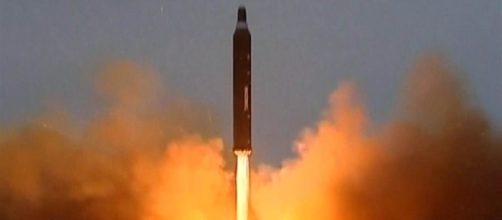U.S. and South Korean officials said on Wednesday morning that North Korea fired another ballistic missile into the Sea of Japan. Japanese Prime Minister Shinzo Abe immediately condemned the launch. He said the National Security Council of Japan would discuss the incident.
The ballistic missile was launched at 6:42 a.m. Seoul time from the vicinity of Sinpo, South Hamgyong province, which North Korea uses for its submarine activity. The missile flew around 60 kilometers, according to an official of South Korea’s Defense Ministry.
But U.S. State Secretary Rex Tillerson was a bit more subdued.
In a tweet, he dismissed the firing as another test that Pyongyang had done the past few months. He tweeted, “The United States has spoken enough about North Korea. We have no further comment.”
Pressure on China
Washington, instead of its usual condemnation of North Korea’s test-fires, would rather place the pressure on China to make Kim Jong-un, the leader of the communist country, stop firing missiles and its nuclear program, CNN reported. U.S. President Donald Trump is scheduled to meet with Chinese President Xi Jinping in a Florida summit.
Trump, on Sunday, said if China would fail to solve North Korea, the United States would. “China will either decide to help up with North Korea, or they won’t,” Trump said.
He added, “If they do that will be very good for China, and if they don’t do it won’t be good for anyone.”
Threats on U.S. base in Japan
A month ago, Kim Jong Un oversaw the firing of four banned Ballistic Missiles. He said the launch is to prepare for an attack on a U.S. base in Japan. North Korea fired the missiles from a region close to the boundary of China and North Korea.
The launch was held while the U.S. and South Korean armed forces were holding yearly military exercises in the area.
Michael Hayden, the director of CIA between 2006 and 2009, said on Tuesday that Pyongyang has not yet developed nuclear warheads which could be mounted onto missiles. But he predicted that before Trump’s current term ends, the missiles from Pyongyang could likely reach Seattle using an indigenously produced nuclear weapon aboard an indigenously produced intercontinental ballistic missile.

